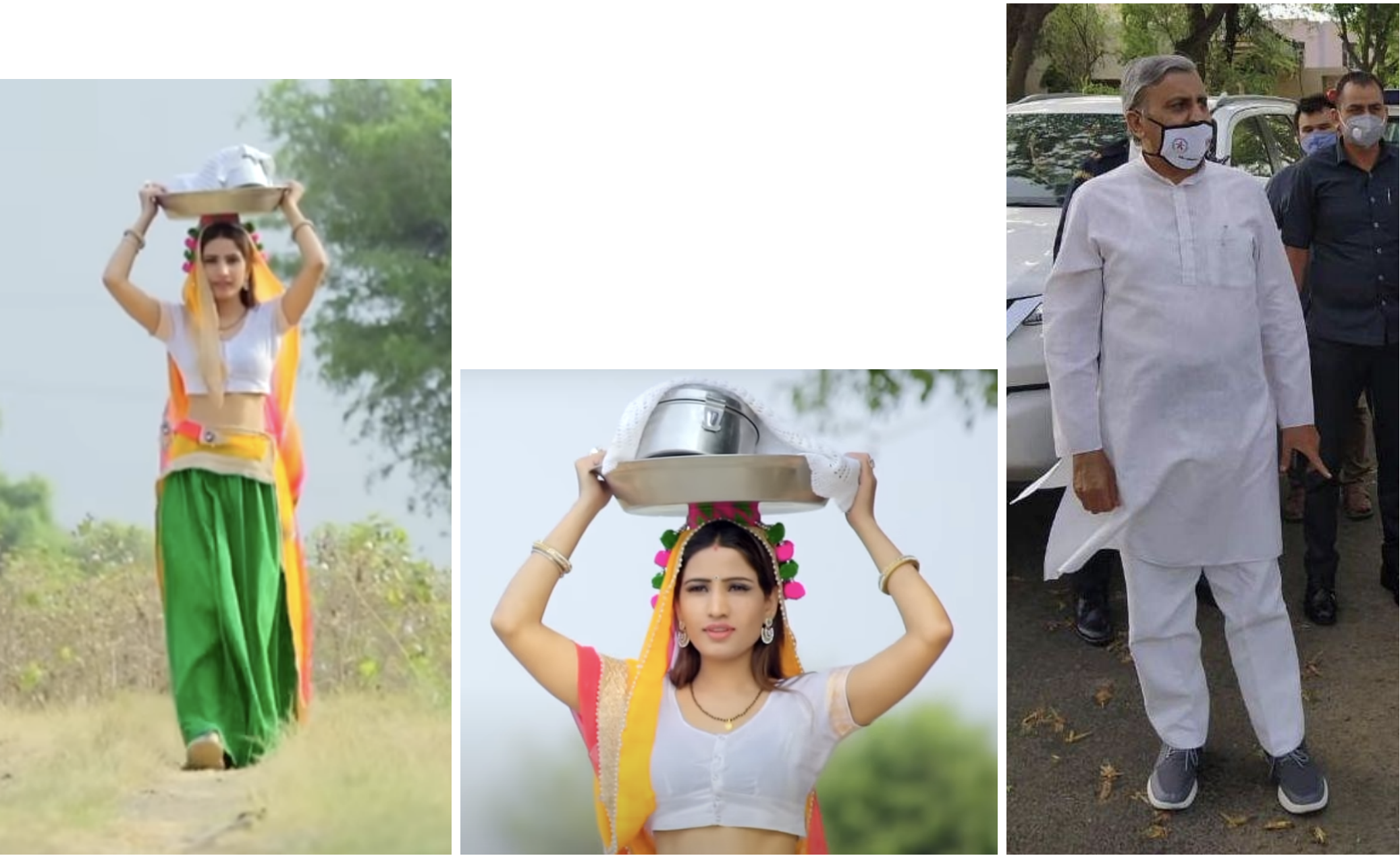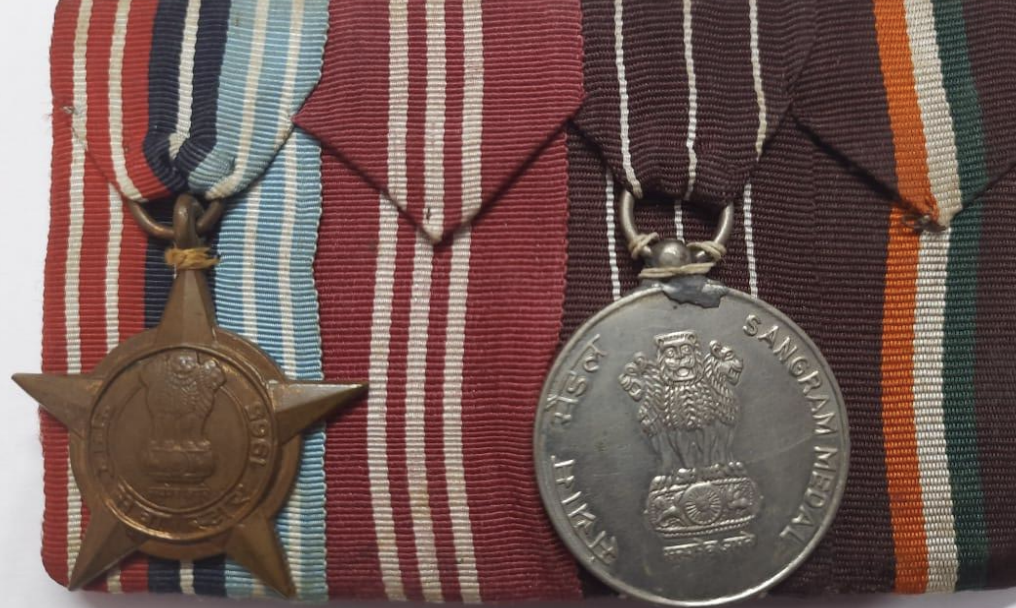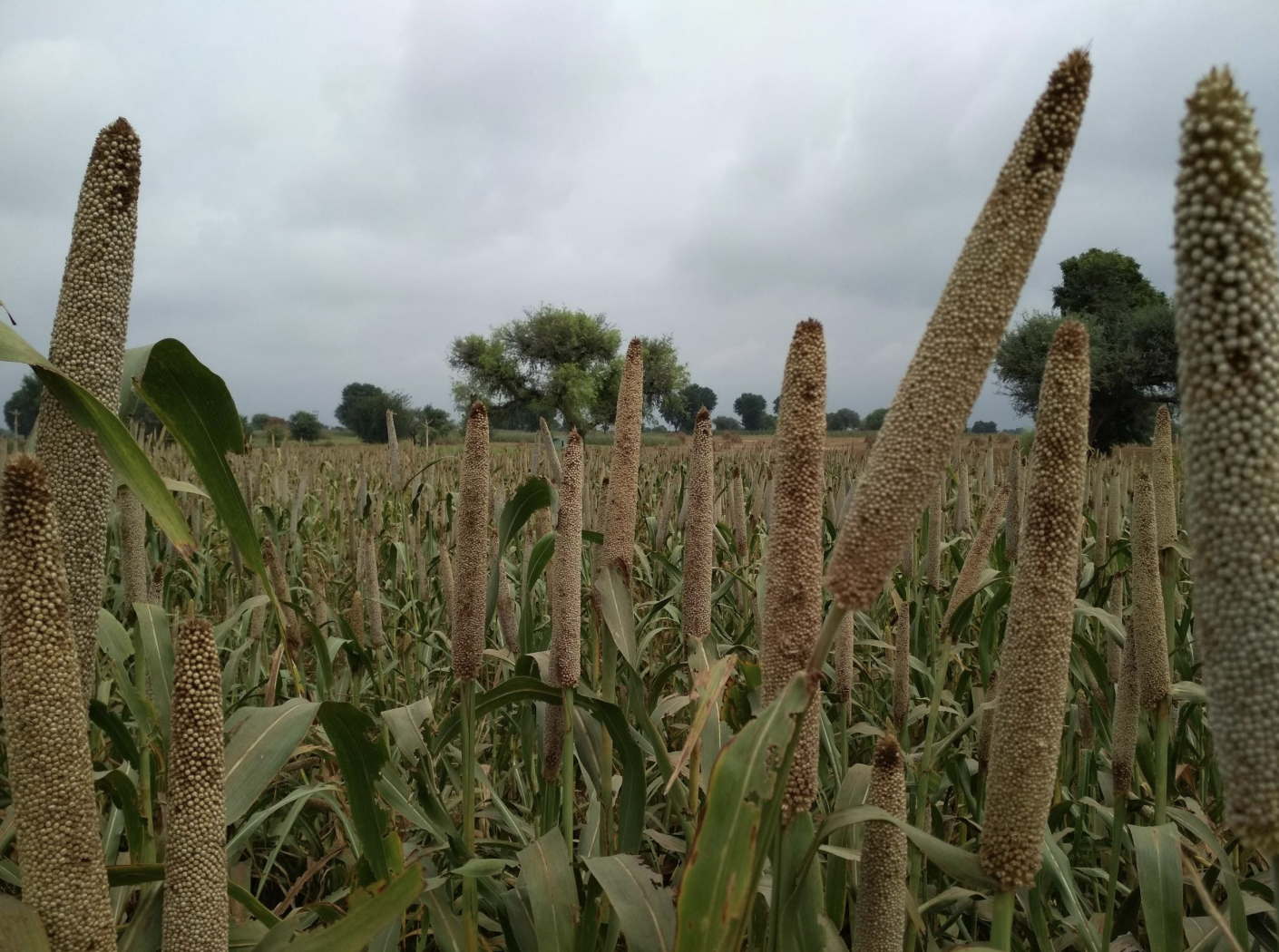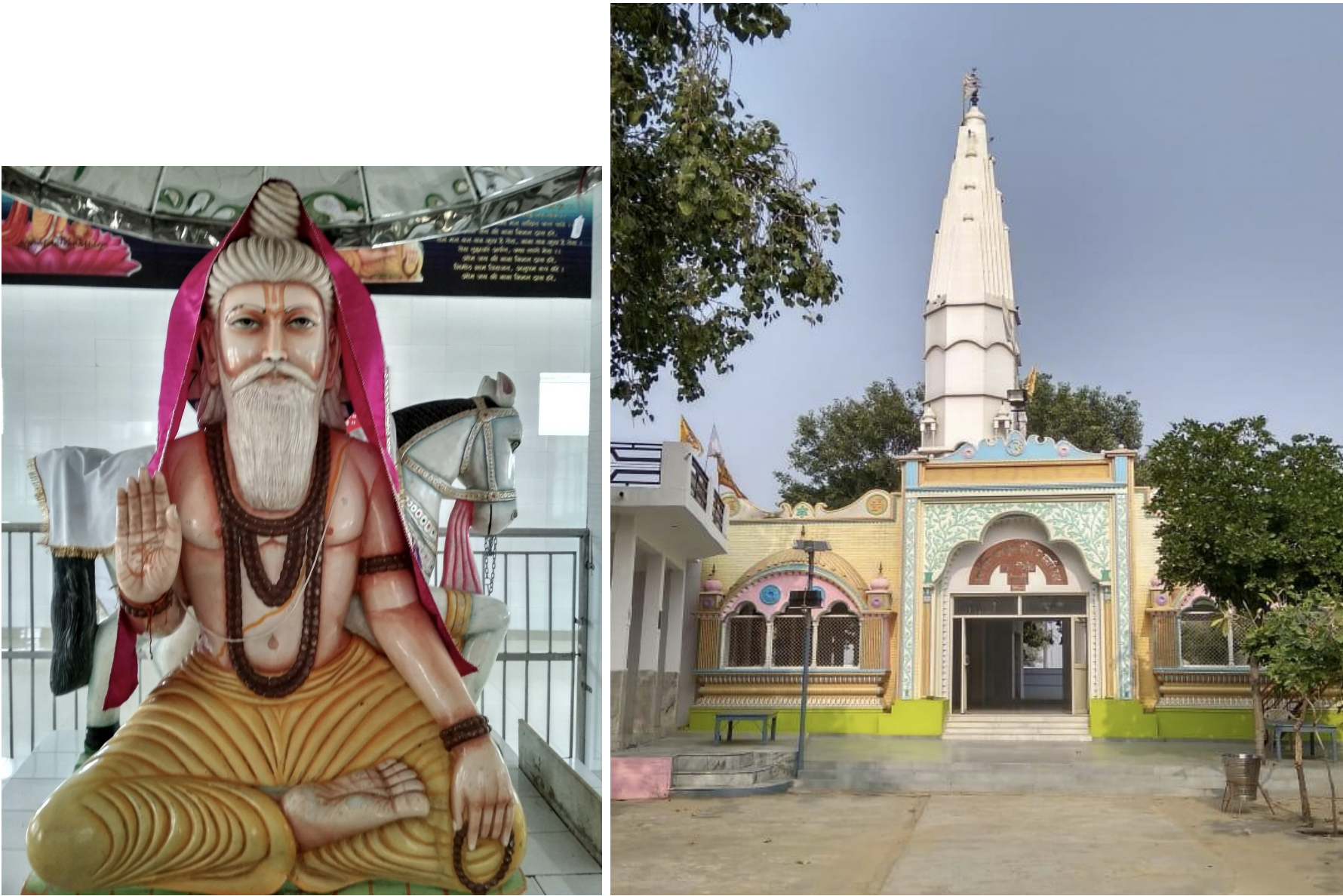Nimoth - The untold story of my ancestral village
Date: January 5, 2021
Abstract
The majority of India’s population resides in its village making it crucial to develop an understanding of villages. In the light of social, political, and economical aspects, I analyze my ancestral village called Nimoth in the Northern Part of India. My key focus will be on its demographics, development since independence, and the uniqueness it offers.
Demographics
Nimoth comprises of three mohallas - Thukran, Kath, and Chandaliya. It covers 889 hectares of land, separated into three regions - agricultural land, residential land, and 150 acres of forest cover. The farm area is measured using killas (1 killa = 1 acre land). According to the population census of 2011, 844 families reside in Nimoth with a population of 4316. This population is estimated to have gone upto 5000 at present with around 3300 active voters. The village doesn’t consist of any Scheduled Tribes (ST) whereas Scheduled Castes (SC) comprises around one-fourth of the village population. Nimoth houses many castes including ahirs, baniyas, brahmins, harijans, kumharas, khatis etc. Ahir is the dominating caste which owns almost all the agricultural land and holds significant influence over the village politics. With the nation’s progress, social discrimination is reducing drastically in Nimoth. Though land is separately demarcated for the harijans, the village has wonderful peace and unity. Harijans are devoid of major landholdings forcing them to live in a ghetto-like situation. They often work as farm labourers, construction labourers, etc. Interestingly the situation is improving rapidly with the government's support and the positive outlook of the new generation. The agricultural land is more or less distributed uniformly among the Ahir community. The biggest landholding with an individual is around 36 acres. The majority of Ahirs earn their livelihood through farming and animal husbandry. A very large fraction of them are also serving in the military and paramilitary forces, earning the Ahirwal region the reputation of ‘Israel of India’. Ahirwal or the ‘abode of Ahirs’ consists of parts of Southern Haryana and parts of North-Eastern Rajasthan including districts like Rewari, Mahendragarh, Gurgaon, Alwar, etc. Brahmins earn their livings through religious ceremonies and rituals on wedding occasions. The entire trade has a monopoly of baniyas who owns all the shops and services in the village. Both of these communities have recently started to work in professional services like doctors, engineers, teachers, etc. Unfortunately, occupation in Nimoth is highly correlated with the caste and continues to do so with a handful of exceptions.
Social Indicators
Nimoth has a highly conservative and patriarchal society. Married women are still required to veil their faces. Girls are seen as a liability due to the evil practice of dowry. The poorest of the poor are expected to provide furniture, modern appliances, scooters, cars, cash, etc in dowry. The villagers consider the boy child as the heir to their land and property. This has led to a skewed sex ratio of 885 females per 1000 males, higher than Haryana’s but much lower than the national sex ratio. One of the main reasons for this is prenatal sex determination which leads to early abortion. Poor government regulation over sonographic tests in the village has facilitated this. Earlier female infanticide was also rampant which is almost extinct now. Fortunately, the trend is not following anymore and the sex ratio is expected to increase in the coming census of 2021. Male literacy of Nimoth is as high as 93.14% in the 2011 census, whereas female literacy is as low as 67.70 %. Until the 90s, girls were only allowed to complete primary education. But now they are allowed to study upto graduation. Though they are strongly discouraged from pursuing higher studies. New brides are being allowed to study further as the village is heading towards becoming a modern village that values education. The village has now produced many engineers, doctors, teachers, defence officers proving its mettle in human resource development. Many gallantry awards have been won, bringing pride to the village.
Village Administration
The village Panchayat enjoys considerable influence and is responsible for solving all the village matters. Therefore Policing is a rare sight, although there is a police chowki in Dahina. All the administrative tasks are well distributed for smooth work and cooperation. Sarpanch assisted by 14 panchs heads the administration. Land records are managed by Patwari, whereas lineman takes care of uninterrupted supply through the overhead transmission lines. Village chowkidar summons people on the call of sarpanch and is responsible for all announcements. For e.g. in the corona crisis, he was responsible for not allowing gatherings of more than 5 people in cooperation with the police. Lambardar is responsible for revenues and often used as a witness for property dealings. The mandirs are taken care of mandir samitis which manages the fund as well as arrangements which are headed by the sarpanch.
Sports and Food
Sports lie at the heart of Nimoth. With a large emphasis on joining defence services, health and fitness are of prime importance. Most of the youngsters run or jog long distances almost daily. Volleyball, Wrestling, and Kabaddi are the main sports. Bi-annual wrestling contests with prizes worth lakhs are organized, promoting the sports culture. The volleyball team regularly brings laurels in the district and the state tournaments. Emphasis on good health leads to increased production of dairy foods such as butter (makhan), milk, buttermilk, ghee, etc. The staple diet is largely vegetarian consisting of wheat rotis in summer and millet (bajra) rotis in winter. Ghee is a major ingredient of all dishes. Garlic-Chilli and Kachri chutney are often consumed with a glass of buttermilk. Churma is one of the classic food delicacies. In winter mouth-watering Sarson ka saag is a delight. White Goose Foot (bathua) is used to make raita, parathas, etc. Apart from this, locally available radish and carrot, fresh from the farms are often used as a salad, making the food more palatable.
Culture
The village fields are lush green in summer and winter before the season of harvest, soothing to eyes. Being little away from the main road, a relaxing silence remains all time, except for the beautiful chirping of sparrows or temple bells

Old people consume tobacco and smoke hookahs often taken as a symbol of pride. The majority of people are teetotallers as drinking is considered bad. Consuming a non-veg diet is considered lowly and thus attributed to ‘low caste’ people. No non-veg outlets are available in the village. White kurta-pajama is the casual dress for men and women wears the ahirawati dress called ‘teel’ - a modified version of lehenga-choli and salwar suit.
Development since Independence
The village has seen tremendous changes in lots of aspects. Agriculture has always been at the heart of all changes in the village in some way or the other.
Upto late 90s
After independence, the land was redistributed to a slight extent. The administration was handed over to Panchayat in the early 90s. Even before this change, only key people in the village were responsible for making all the decisions and arbitrations. The green revolution had a great impact on Nimoth, precisely the reason for very well developed irrigation facilities. Pump sets and sprinkler systems were available in the early 70s. This coupled with cattle and animal husbandry boomed Nimoth’s economy. Special breeds of Murrah buffalo are reared which fulfill milk demands and create an additional surplus for sale. This also created the demand for an animal doctor in the village. All the daily needs were either met through self-production or through local shops. Some bad social practices like purdah were prevalent which continued till two-three decades after independence. Houses were constructed as Havelis where entire families resided. These houses were constructed using stones ingeniously fitted by a mason. Even before the green revolution began, people were actively involved in traditional farming and defence services for the nation.


Last two decades
In the last two decades, Nimoth has witnessed large changes. The village economy has kind of ‘opened’. Even though most of the villagers are prosperous, they are very frugal in spending. This has restricted the social development of people. Open defecation was practiced until 2014, before the Swaccha Bharat Abhiyan started, very few toilets were available in the village. With the support of the Haryana government, toilets are now available in every household without exception. In the last 6 years, Concrete pavings have been constructed in every single street/gali in Nimoth village. This was made possible under the Pradhan Mantri Gram Sadak Yojana (PMGSY). Earlier the village streets were pitch black at night, but now the government has installed solar-powered street lights. Dustbins are also put up at lots of places to collect the non-biodegradable waste. In the early 20s, under the incentives of the Haryana Government, plastic water tanks were distributed freely to the harijans. In recent years, the standard of living has improved to a large extent. Nimoth is rapidly picking pace to give a flavor of a city-like lifestyle with modern houses.
Infrastructure
Nimoth entirely consists of pucca houses. Both government and private ap water supplies are available for household use. Most houses have connections of both to avail better water facilities. Recently some villagers have expressed concerns over the drinking quality of tap water increasing the demand for R.O. water suppliers. The electricity supply of Nimoth averages to about 20 hours per day in the residential area and about 8 hours per day in the fields. Distribution is done using overhead electrical lines, managed by a lineman. This has led to the use of inverters in most households. Modern amenities like a refrigerator, washing machines, LCDs are available in most of the houses. Though Air conditioners are not commonly available. The village houses 3 Dharamshalas serving to each mohalla where rituals and occasions, meetings, etc are organized. Nimoth had a government school providing primary education until the early 2000s. The school now teaches upto secondary, though it still lacks proper education. The primary health center has also operated for a long time but its quality is dismal. Therefore, most education and medical healthcare facilities are outsourced to Dahina or the main city. Nimoth boasts of an Angwanwadi, which takes care of the early development of children and their vaccination.
Economic activities in Nimoth
Agriculture is the primary source of the village’s economy. All other activities surround it. In recent times, non-farming activities are emerging. Industrial development still awaits Nimoth. In this pursuit, I am trying to explore rural industries feasible in Nimoth.
Agriculture
Nimoth has very fertile alluvial soil. In the Rabi season, sarson (mustard), wheat, barley, chana (gram nut) are the main crops grown. Some people also grow radish, carrot, and turnip for personal use and kasni (Chicory) as a cash crop. In the Kharif season, bajra (millet), guar and cotton are grown. HYV seeds are sown using tractors during the season. Well developed irrigation and fertilisers greatly boost the farmer’s incomes. Crops are harvested using agricultural labourers. These labourers mostly come from landless dalits, neighbouring states of Eastern UP and Bihar.

Nimoth has around 150 tubewell connections available on fields for irrigation, which are heavily subsidised by the government. The ownership of these tubewells is restricted to people with more than 2 acres of land. Most of these tubewells with water pumps are now being upgraded to submersible pumps. More recently some villagers have started to use drip irrigation and greenhouse farming to grow vegetables demonstrating the forward-thinking of the village. Some of the modern farmers are very experimental in Nimoth. Kinnow orchards and vegetables are a deviation from the majority of their brethren growing food grains. The availability of large residential plots allows growing veggies like spinach, brinjal, potatoes, chillies, bottle gourd, sponge guard, sweet potatoes, etc for personal use.
A system of land leasing has emerged in Nimoth, where people migrating to cities lease their land to people residing in the village for cultivation. An amount is agreed upon before harvest which is facilitated by the village panchayat. If the crop suffers damage, the same is adjusted upon and the cultivator doesn’t have to pay the full amount. Therefore, creating a win-win situation for both. This practice is continued from decades but rose to prominence in recent times due to increased migration. The tractors used for ploughing and sowing the seeds are usually owned by a local villager, but threshers are outsourced from the Northern part of Haryana due to their large cost. The threshed wheat crop provides with wheat and the threshed husk called ‘bhusha’, which is used as fodder for the cattle. Therefore no problems such as stubble burning arise which cause air pollution as in the case of rice cultivation. Tractor-trailers are used to transport extracted food grains to the mandi by packing them in gunny bags. Some part of it is kept for personal consumption.

Non-Farm activities
Animal husbandry is the second most common activity in Nimoth. Buffalos of high milk yielding such as Murrah breed and desi & Jersey cows are reared in the majority. Milk is sold locally and buttermilk is distributed for free. The cow/buffalo dung is composted to use as manure. Large milk suppliers have emerged in the village who collects milk from all the households and instantly determine the quality using a Lactometer. Based on this quality and quantity measured using an electronic machine, an electronic receipt is generated in seconds. All this facility is housed on a pickup truck. This reflects the modern emerging rural industrialization that facilitated using technology. RO water business is also rapidly emerging due to villager’s concerns over water quality. Fertilisers are believed to be the cause of deteriorating tap water. The bi-annual mela also contributes to the economy. A lot of tourism potential is still untapped. Nimoth waits for the dawn of industrialization which can be a huge booster to the village’s economy. It will help generate more employment and increase the productivity of the village.
Uniqueness of the Village
As mentioned earlier, the etymology of Nimoth traces to the shade of neem. This references to the legendary saint called Baba Bishandas who visited the village around 400 years ago from Mathura, on the bank of Krishnawati river. Unfortunately, the river has been turned into a drainage canal due to its dependency on rainwater. According to the legend, he used to give updesh sitting in the shade of a neem tree, thus the name Nimoth. It is believed that he took samadhi in the village. A very large temple was developed at the samadhi’s location in the last decade replacing the earlier smaller temple. People of Nimoth are highly religious and unanimously worship Baba Bishandas. A mela or village fair is conducted bi-annually on vaman jayanti and vaman dwadashi as the baba was devout of Vaman avatar, the avatar of the legendary god Lord Vishnu. The mela contributes immensely to the villages' economic activity as the mandir is visited by people of 21 nearby villages. A plethora of activities like wrestling, rides, etc happens during the mela with a footfall of thousands.

The mandir campus spreads over more than 2 acres. It also consists of large pooja halls. Shikha of the mandir is visible from outside the village. It is governed and managed by the mandir trust headed by the sarpanch and elderly people of the village. The trust is very rich with funds of more than 25 lakhs accumulated from donations and contributions. This allows for further development of the mandir campus and the village. Sports grounds for wrestling and volleyball are also situated on the mandir premise. Another exciting place in the village is a 400 years old tubewell which was used for drinking purposes in the past. This well still has water but it is no longer used as modern tubewells with water pumps are available. It is constructed using stones and mortar. All the stones used in the Nimoth for construction have come from nearby hills which are part of the Aravali Range.
Conclusion
A village offers lots of unique things which may not be unique for the villagers themselves, but quite unique when viewed from an outsider's perspective. Visiting our villages provides lots of insights about our country, interesting memories and rich history. They also provide us with better perspectives on development and the economy of our nation. Therefore it is crucial to understand the village's economy and development to understand the nation’s economy and development. With this, I end the story of my ancestral village called Nimoth.